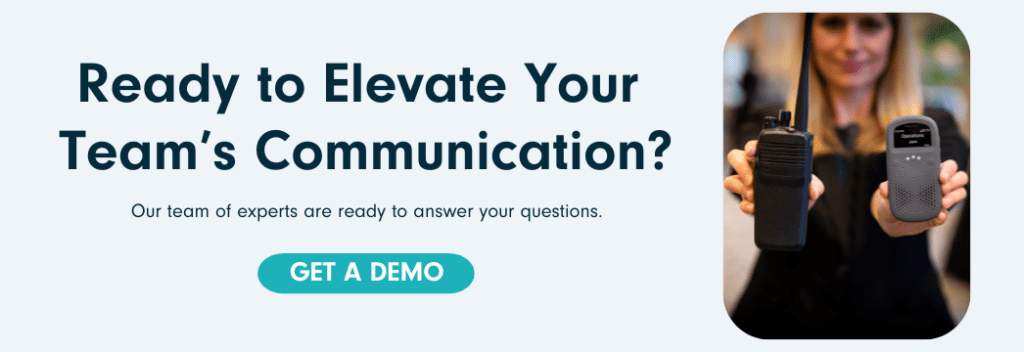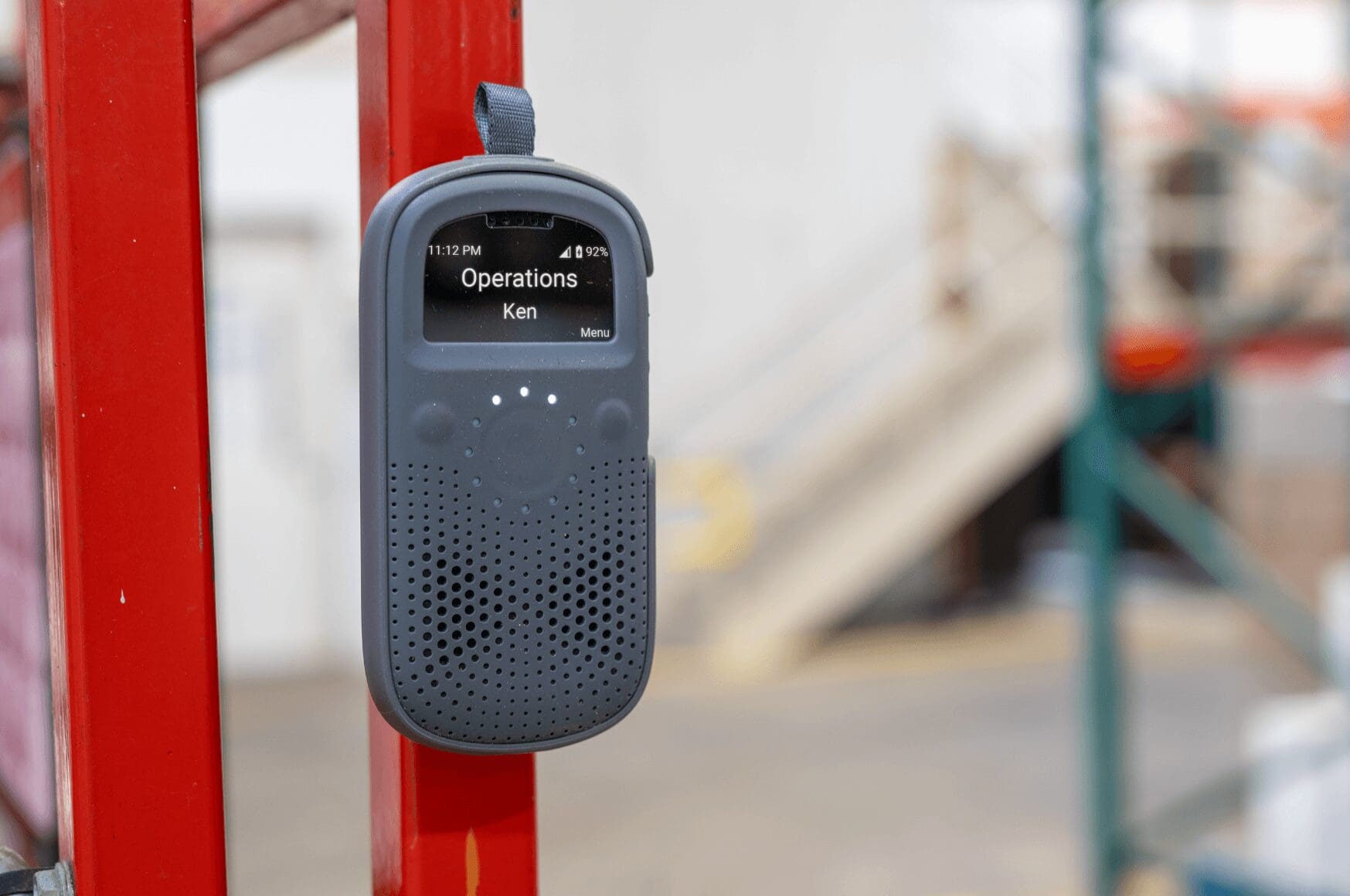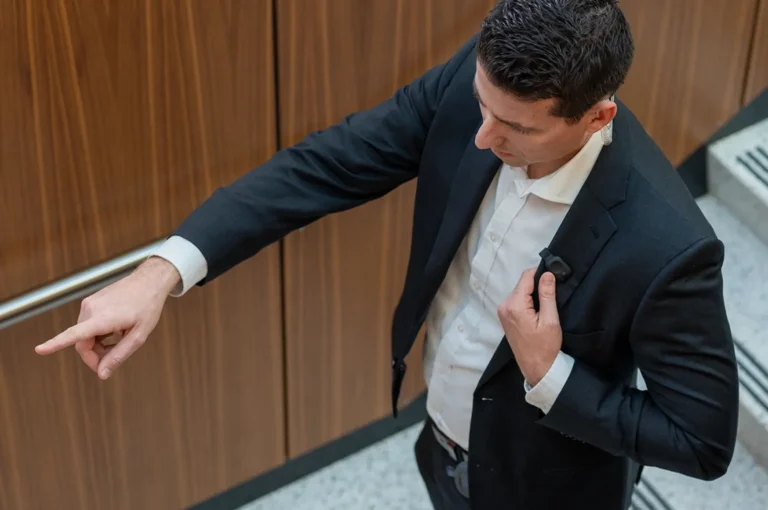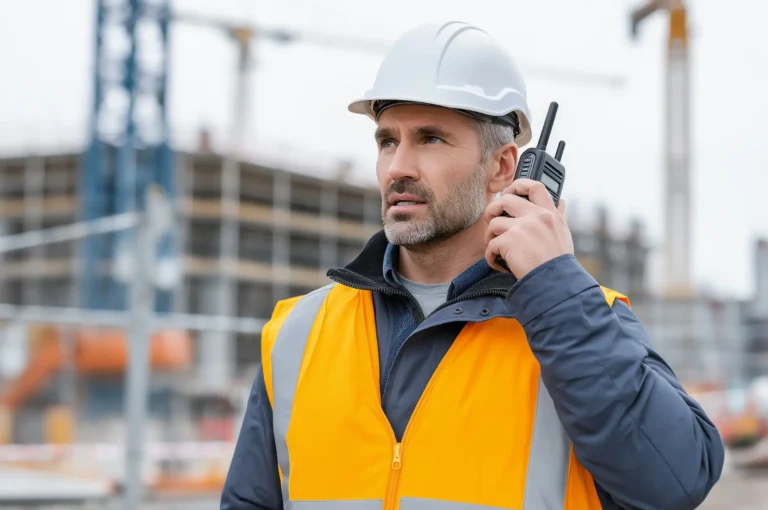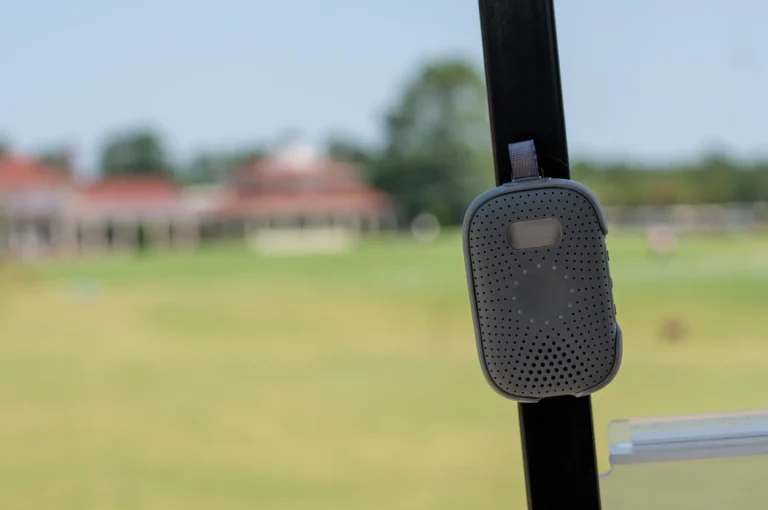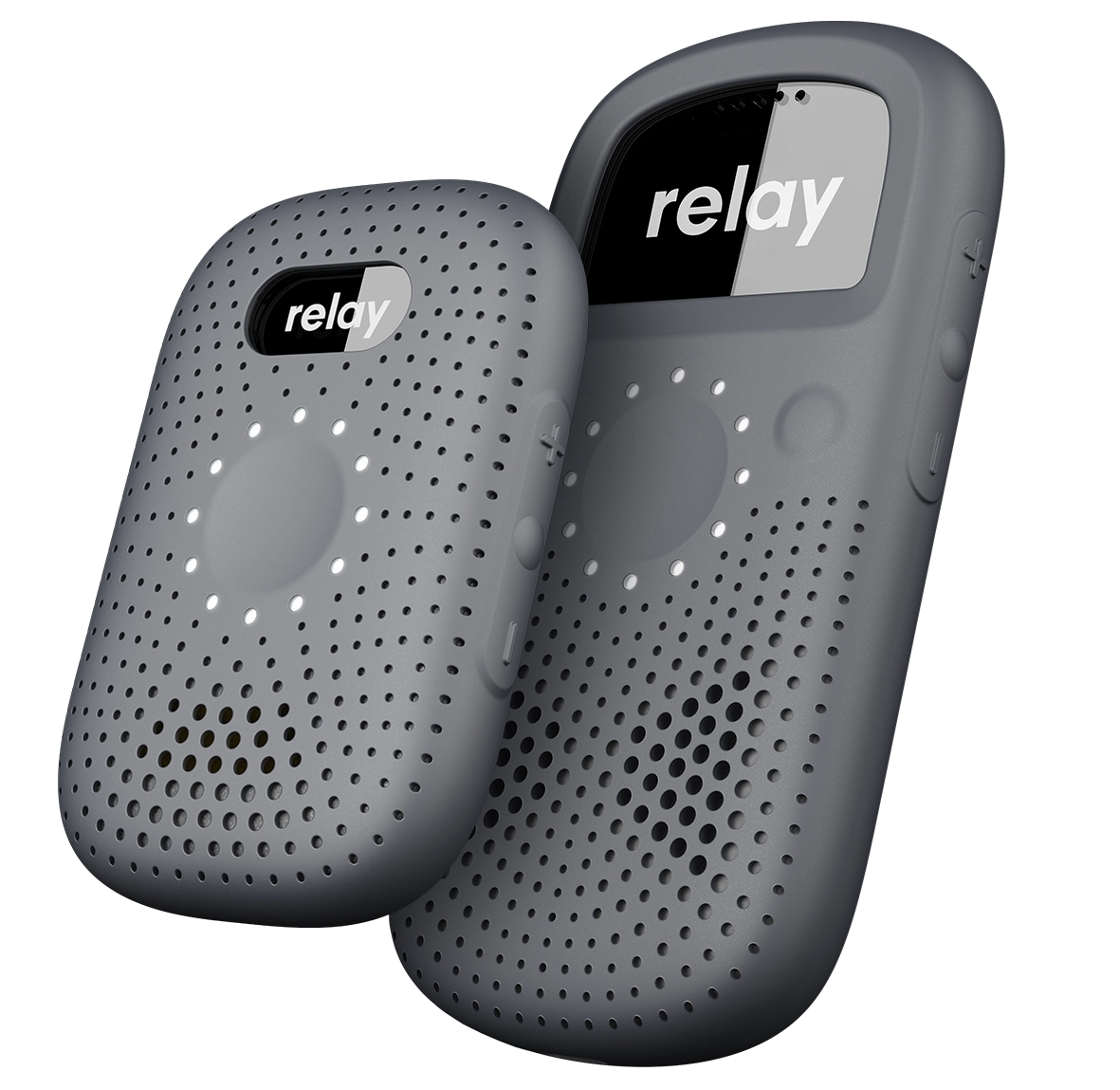Many people think of walkie-talkies as clunky relics of the past—just a step above the old DIY paper-cup-and-string trick. But don’t count these handheld devices out—they’re still widely used. So what are walkie talkies used for today? You might be surprised.
In this article we explore how these tools evolved, and why modern versions are now indispensable in modern workplace communication.
Walkie-Talkies: Outdated or Underrated?
Clunky buttons, long antennae, and their ties to construction crews and childhood games give walkie-talkies a dated image. And next to smartphones and messaging apps, it’s easy to see why they feel like a step back in time. Still, their reputation doesn’t tell the full story.
Below you’ll find practical advantages that keep them in use today:
- Instant voice access – No apps, no dialing, no delay. Just press a button and speak.
- Reliability – Say it once and the whole group hears it.
- Built for tough environments – More rugged than most smartphones or tablets.
- Offline reliability – They work even when Wi-Fi or cell service goes down.
- No license needed – Most models don’t require FCC approval.
How Two-Way Radios Improve on Walkie-Talkies
While the terms walkie talkies and two-way radios are often used interchangeably, they’re not quite the same. Walkie-talkies are a type of two-way radio, and they’re usually handheld and designed for short-range communication.
Two-way radios, on the other hand, include a wider range of devices, from portable units to vehicle-mounted and fixed location systems used in professional settings. For decades, they’ve worked the same basic way: both send and receive voice messages over radio frequencies without cell service or Wi-Fi.
When it comes to demanding environments, two-way radios have typically handled larger teams and longer shifts due to stronger battery performance and hardware designed for continuous use. They also include features like GPS, programmable channels, and caller ID that go well beyond what basic walkies provide.
These upgrades make two-way radios a better fit for busy workplaces where teams need more than just basic voice access. They’re built to handle longer shifts, tougher conditions, and larger communication networks. Still, they’re not without limitations. The next section looks at where traditional two-way radios fall short.
Limitations of Two-Way Radios
Although two-way radios expand on what walkie talkies can do, they’re not a good fit for every situation. Some of their limitations become clearer in fast-paced workplaces or industries that rely on coordination tools beyond basic voice communication.
Here are a few of their most common drawbacks:
- Licensing requirements – Many two-way radios, especially those operating under General Mobile Radio Service (GMRS), require an FCC license.
- Interference and weak security – Without repeaters or antennas, users can find themselves out of range. Shared channels also increase the risk of overlap, static, interference, and little to no encryption. These limitations make them less suitable for sensitive environments.
- Lack of visibility – Traditional radios don’t log messages or track users. There’s no way to monitor what’s said, when it was said, or who’s currently active.
- No integration with digital tools – Two-way radios operate independently of the scheduling, dispatch, and messaging platforms that many modern teams rely on.
The Evolution of Push-to-Talk
Walkie talkies and two way radios were originally built for high pressure environments like military units, emergency crews, and teams that needed to communicate fast. That purpose still matters, but the technology behind it has evolved to meet the new demands of modern businesses.
Push-to-talk (PTT) systems have moved beyond short-range devices like two way radios and walkie talkies to smart radios. Teams that used to rely on radio waves can now communicate over Wi-Fi and LTE, supporting nationwide connectivity without towers or expensive infrastructure.
Smart radios now play a central role in modern workplaces, offering instant voice communication with an abundance of added features that suit frontline teams in industries like healthcare, manufacturing, and hospitality.

Enter the New Era: What Smart Radios Do Differently
Smart radios take everything walkie talkies and two-way radios do well and push it further. They’re still voice-first tools—but unlike older radios—they have expanded capabilities like language translation, location tracking, built in safety features, and operational insights.
This makes smart radios a better fit for larger businesses, especially those with language barriers, fast operations, and that need to stay connected across distances. In fast-moving environments where timing is everything, the technology you use matters.
Smart radios also offer message history and user management features that help teams stay organized and accountable. They’re designed to be user-friendly, too. Many models are compact and durable, with controls that feel familiar, even to first-time users.
Furthermore, clear audio makes a difference. In loud settings—like busy construction zones or crowded event spaces—smart radios cut through background noise so teams don’t miss critical details.
Industries That Demand More Than a Walkie-Talkie
As organizations grow and communication needs increase, the limits of walkie-talkies and two-way radios become harder to ignore. When communication starts to break down or coverage becomes unreliable, it’s a sign that the tools in place aren’t keeping up.
Smart radios offer a robust solution for teams that need secure, flexible tools across large spaces or multiple locations. Plus 18-24+ battery life. The following industries rely on smart radio solutions for fast, reliable communication that keeps operations on track, all day long.
Hospitality
Smart radios help hotel staff stay connected across floors and departments, while maintaining a professional look. Quick and discreet communication allows front desk teams to check in with maintenance or housekeeping efficiently without disturbing guests. It keeps service flowing smoothly, even when the property is busy. Additionally, many smart radios have built-in panic buttons so staff can feel safe and confident that help will come if they ever need to call for assistance.
Manufacturing
On loud, busy production floors, smart radios cut through noise and support hands-free coordination. Relay serves manufacturing sectors like food & beverage, automotive, machinery, and warehousing with smart radio features like added operational insights. The tool offers data-driven visibility into team activity, helping managers to spot gaps, bridge language gaps, reduce downtime, and optimize performance.
Facilities & Food Services
Whether it’s fixing a water main or restocking a venue mid-event, these teams need reliable tools that don’t slow them down. Smart radios use LTE to provide consistent access, even in high-traffic areas or places where the Wi-Fi lags.
Education
Smart radios give school staff a reliable way to communicate everything from daily logistics to emergencies. Real-time voice access makes it easier for anyone from administrators and safety officers to maintenance teams to respond quickly and stay coordinated.
Healthcare
Healthcare facilities like hospitals, doctor’s offices, outpatient clinics, and long-term facilities can’t afford delays or miscommunication. Smart radios give clinical and support teams instant access to each other. Plus, features like encrypted voice transmission and user management support compliance standards by protecting sensitive information.

What to Look for When Upgrading to Smart Radios
If you’re considering smart radios for your team, knowing what to look for can make the difference between a quick fix and a long-term solution. Of course, not all systems offer the same benefits, and choosing the right one depends on how—and where—your teams work.
For example, instant voice access helps reduce task switching and supports hands-free use and busy environments. Features like message logging and user tracking also give managers better visibility into daily operations.
In addition to functionality, the system should scale across multiple locations and work with tools you already use. Avoid platforms that require complex infrastructure or force your team to change how they operate.
Security is another key factor. Look for strong encryption, user access controls, and compliance support, particularly in regulated industries like healthcare or education. The system should also include admin dashboards and usage logs, so managers can track communication and team activity without constant physical check-ins or manual reporting.
Finally, ease of use matters. The right system should be simple enough for any team member to start using right away. Combine that with reliable support and enterprise-grade uptime, and you’re not just upgrading communication—you’re setting your teams up for better performance across the board.
Revamp Your Communications with Relay
Relay’s smart radio is up to the task to support safer communication and stronger team coordination. Our cloud-based platform addresses common pain points in traditional radios, such as bulky hardware, limited range in large facilities, required FCC licensing, and setups that often need IT support. By removing these barriers, we make safer, faster communication more accessible to frontline teams.
Ready to make the switch to smart radios? Get a one-on-one demo with a product expert today.
